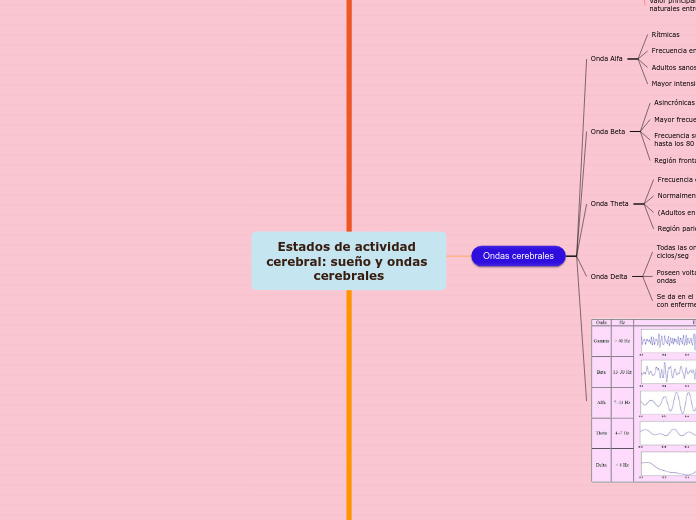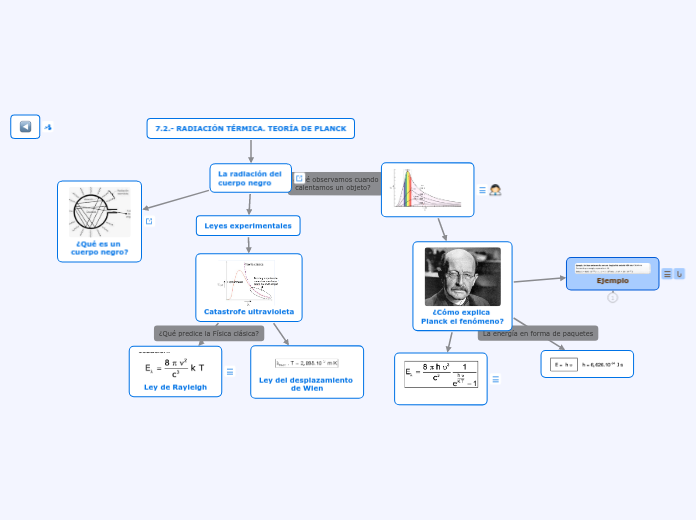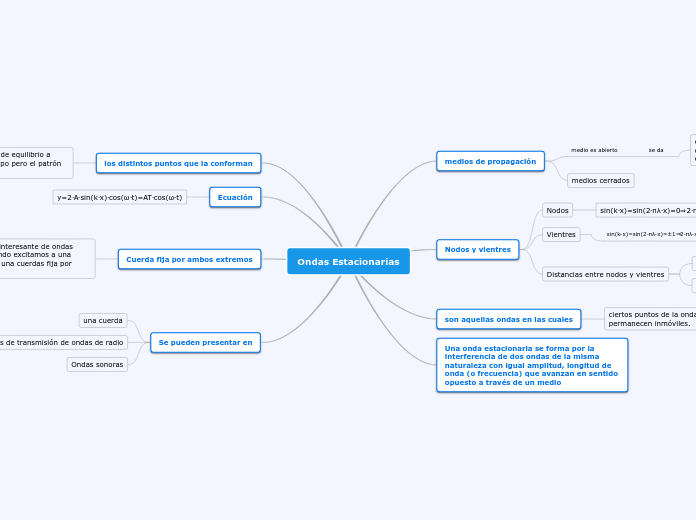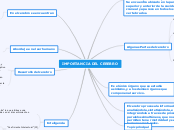Estados de actividad cerebral: sueño y ondas cerebrales
To name your story, you have to think about the overall message and what you want your audience to understand from the story. Also, make it relevant and easy to remember.
Cambios del EEG en diferentes fases de la vigilia y del sueño
sueño
Etapa 4
Son ondas delta
Etapa 2,3 y 4:
Las ondas EEG bajas
Sueño de ondas lentas
Etapa 1: Tiene sueño ligero
Las ondas de EEG bajas
vigilia
En estado de tranquilidad suele asociase con las ondas alfa
En estado alerta tiene ondas beta de alta frecuencia
Efectos de los diversos niveles de la actividad cerebral sobre la frecuencia del EEG
Se relaciona entre la actividad cerebral y la frecuencia del ritmo del EEG
-ondas β en los momentos de intensa actividad mental o miedo
-ondas α durante las situaciones de relajación
-ondas θ en los estados psicomotores
-ondas δ en circunstancias de aletargamiento anestesia quirúrgica y sueño profundo,
Origen de las ondas cerebrales
Origen de las ondas Delta
Aparece en el sueño profundo
Las fibras procedentes del tálamo bloquean la actividad talamica, eliminado las ondas alfa
Origen de las ondas alfa
Derivan de una oscilación retroalimentación espontanea
Su frecuencia es de 8 a 13 segundos
No aparecen en la corteza cerebral si no existe conexiones talamicas
Ondas cerebrales
Onda Delta
Se da en el sueño profundo, lactancia y en personas con enfermedades del cerebro
Poseen voltajes del doble a comparación de las otras ondas
Todas las ondas con frecuencias menores a 3,5 ciclos/seg
Onda Theta
Región parietal
(Adultos en situaciones de estrés emocional)
Normalmente en niños
Frecuencia entre 4 y 7 ciclos/ seg
Onda Beta
Región frontal y parietal
Frecuencia superior mayor a 14 ciclos/seg llegando hasta los 80
Mayor frecuencia menor voltaje
Asincrónicas
Onda Alfa
Mayor intensidad región occipital
Adultos sanos despiertos en estado de reposo
Frecuencia entre 8 y 13 ciclos/seg
Rítmicas
Funciones fisiológicas del sueño
The ending of a story is essential. We all know that if the ending is weak, what happened before loses its importance. So make it unpredictable, but fair. A resolved ending answers all the questions and ties up any loose threads from the plot.
Valor principal del sueño: restablecer los equilibrios naturales entre los centros neuronales
El sueño sirve para muchas funciones como:
Conservación de la energía metabólica
Eliminación de los productos metabólicos de desecho
La cognición
Facilitación del aprendizaje o memoria
Madurez nerviosa
Efectos sobre otros sistemas funcionales del cuerpo
This is the closure section of the story.
See examples of possible outcomes below:
- all problems have been solved
- it's clear how each one of your characters ends up
- your main character is transformed by the challenge
Efectos sobre el sistema nervioso
This is the moment when the main character surpasses the last obstacle and finally faces their greatest challenge.
The climax usually follows one of these patterns:
- realization
- resolution
- choice
Type in your answer.
los mas importantes
Teorías básicas sobre el sueño
The middle of the story is where you add layers of complications that will lead to the end. Reveal more about the character's journey. Did their personality go through changes? How did they overcome the challenges? And as you build up the story’s central conflict, make it more personal to that character. Also, from the middle act, you have to lead into the final act.
Ciclo del sueño y vigilia
Posible causa del sueño REM
Otras posibles sustancias transmisoras relacionadas con el sueño
Lesiones en los centros que favorecen el sueño
There wouldn't be any tension and excitement in your story if there weren't any obstacles in your character's way.
Centros nerviosos, sustancias neurohumorales y mecanismos capaces de causar sueño
Your character(s) need(s) motivation in order to solve the challenge(s).
3.- Regiones del diencéfalo
Secondary characters also might have motivs beacuse of which they may cross path with main character or which might trigger them to help the main character.
2.- Núcleos del tracto solitario
Secondary characters might also have motives that lead them to cross paths with the main character or which might trigger them to help the main character.
1.- núcleos del rafe en la mitad inferior de la protuberancia y bulbo raquídeo
Why does your character need to confront this challenge? What does he/she expect to accomplish by solving it?
See a few examples:
- will marry in 3 days
- can fix the mistakes of the past
Ocasionado por un inhibidor activo
Each story has a main character and that character usually needs to solve a problem or challenge. The character's challenge is the one that creates tension throughout the story.
Sueño
In the beginning of the story (or the exposition), you will need to introduce the setting and characters. You might also want to introduce the main conflict. This part of the story is important because it gives the reader necessary background information and maybe even a first insight into a character’s personality.
Movimientos oculares rápidos (REM)
The setting (time & place) of a story can change throughout the plot.
Encéfalo activo en sueño REM, sueño paradójico
Movimientos musculares irregulares y movimientos rápidos de los ojos
Frecuencia cardíaca y respiratoria irregular
Sensory details include sight, sound, touch, smell, and taste. These details are important because they create depth in your setting.
See a few examples below:
- the smell of fresh bread
- the scent of freshly cut grass
- rain falling onto the windshield etc.
Tono muscular deprimido
The weather is an important element in your story because it can highly influence the ambiance and the mood of the characters.
Difícil despertar con estímulos sensoriales con ondas lentas
The time of the story can also change. It can describe the event of a single day or can include an entire year's plot. Anyway, don't forget to mention it.
Movimientos activos de los músculos del cuerpo
Your story can take place wherever your imagination will take you to.
For example: in an elevator, in an enchanted forest, etc. Don't forget to give details of the environment each time the setting changes, otherwise, the story can be confusing. Also, mention the seasons as each of them has unique weather and events.
Ondas lentas
Characters are essential to a good story. Usually, the protagonist(s) is/are the most affected by the plot. Introduce a character by focusing on their actions, interests, and occupation, as the physical appearance doesn't make a difference in most cases.
Sueño reparador asociado al descenso del tono vascular
Type in the name of your character.
Disminuye del 10 al 30% y la presión arterial, frecuencia cardíaca e índice metabólico basal
Add other qualities/attributes of the character.










